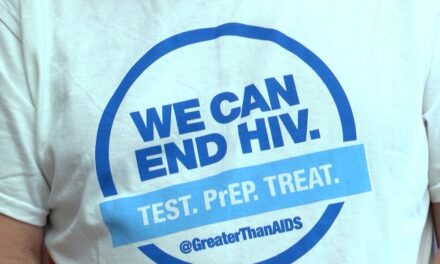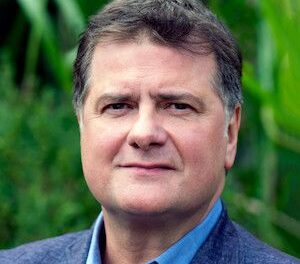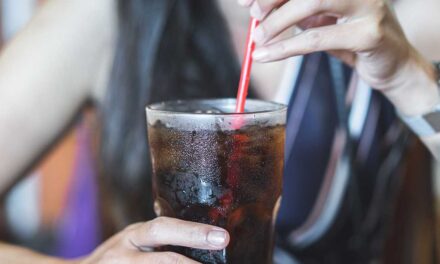Abstract
Social isolation is a risk factor for many diseases and overall increased mortality. Alternatively human connection has been noted to lead to healthier lives and longevity. Medical clinicians need to be more aware of this condition and consider how to prescribe friendship. This is not just an issue for the elderly; many Americans are being ravaged by being alone. There are many organizations that we can refer our patients to in order to make connections. This lesson is one we as physicians need to embrace ourselves as loneliness during our busy days is affecting us too.
All the lonely people, where do they all come from?
All the lonely people, where do they all belong?
Ah, look at all the lonely people!
—“Eleanor Rigby” by The Beatles, 1966
John is a patient of mine. He is in his sixties and originally from eastern Europe. His male partner passed away years ago. John’s health has been worsening for a while. He has several health issues including diabetes and hypertension. He is on all the recommended medicines. I worry about John. John lives alone, and despite being in a city, has become isolated. John slowly stopped taking his medications and began missing appointments. There is an ailment far more sinister than diabetes or hypertension taking a toll on his wellbeing. That condition is social isolation.
The National Institute of Health defines social isolation as a lack of social contacts and having few people to interact with regularly. The National Academies of Sciences, Engineering, and Medicine (NASEM) reports that social isolation significantly increases a person’s risk for premature death from all causes.1 This includes an increased risk for dementia, depression, suicide, hospitalizations, and heart disease. Social isolation is the new smoking! It is just as important to address John’s risk factor of isolation as his risk factors for myocardial infarction. Surgeon General Vivek Murthy has declared social isolation an epidemic. He points out that the Covid pandemic and our gravitation toward technology has made this risk factor even worse.
The same NASEM report (above) goes on to state that as many as 25% of people 65 and older are considered socially isolated.1 And it is not only patients who are elderly. The American Association of Retired Persons (AARP) estimates that more than 40 million Americans identify as lonely, putting them at higher risk for social isolation.2 The intersectionality of John being an immigrant and a gay man, puts him at greater risk for being isolated in our society. Much like the stress of racism transforms the biology of Black women in our country to a point of higher rates of premature birth3, a similar epigenetic phenomenon is occurring in the physiology of those experiencing social isolation. One study from the University of California Los Angeles (UCLA) showed increased inflammatory markers and decreased antiviral genetic activity in isolated individuals.4
The Harvard Study of Adult Development has followed participants for more than 80 years and concluded, it is our relationships that have the greatest influence on morbidity and longevity.5 To be clear, the study accounts for exercise, diet, and cholesterol levels and does evaluations through blood work, surveys, and MRIs. Another project has followed the people who live in the Blue Zones of the world, like Okinawa Japan, to better understand their extended good health. Although diet and physical activity play an influential role, the Blue Zones project also found that human connection is essential. Using census data and established methodologies, the Blue Zone team concluded strong friendships and partnerships stave off mental deterioration. Joining with friends to laugh and connect produces more of the happy hormone, oxytocin, which can lower blood pressure, cortisol levels, and improve cellular healing.6 Some speculate that the improved health outcomes in these areas are due to the consumption of moderate daily alcohol intake or the exercise in these communities. However, the Blue Zone project cites the work of others when concluding that the social bonding that takes place during these activities is the key ingredient.7,8
So, how do we combat this ruthless health scourge? We can start with universal screening. The American Academy of Family Physicians (AAFP) is promoting social determinants of health screening as part of their EveryONE Project.9 Additional questions will have to be considered to explore social isolation and loneliness which the Centers for Medicare and Medicaid Services (CMS) have created in their Accountable Health Communities Health-Related Social Needs Screening Tool. Once patients are identified as at risk for isolation, they will need assistance in addressing this. In our practice, like many others, currently we have handouts for patients with a list of local dentists, food pantries, and places to exercise. We could add resource information of places to engage with others. Handing a list to a patient is not enough, however. And family practitioners are busy. We must tweak our workflow to engage health coaches, case managers, social workers, and/or train medical assistants and nurses to help patients make initial contact with such organizations. An office could have a computer with bookmarked web sites for a patient to explore tools like Meet Up groups or to locate a Tai Chi class. The AAFP has created the Neighborhood Navigator site with links to thousands of social health resources all searchable by zip codes. We often work closely with behavioral health colleagues who could direct patients to social support hotlines like the Institute on Aging Friendship Line (1-800-971-0016) or The Samaritans HelpLine (1-877-870-4673).
The National Council on Aging and AARP have resources for volunteering, community connection tools, and transportation to such activities. Our communities have political clubs, YMCA/YWCAs, and others places to meet new people based on age, gender, or cultural and ethnic affiliation. These are important resources to share with patients, yet I propose we also think about what we can do directly in our offices to reduce isolation. I spend hours a day counseling patients about smoking cessation and increasing access to natural activity to improve their health. It is time to apply the same amount of effort to social isolation. I have conducted several versions of group visits for prenatal care and for patients with diabetes and chronic pain. Participants benefit in many ways from these group visit and especially from the human connection.10 A family physician friend of mine in Maine started a group for older men (“the Old Duffers”) to gather as these men faced physical and emotional challenges.11 Pausing to notice which groups need our attention and bringing them together can be the most powerful medicine of all. It is hard work but can have profound outcomes for patients and practitioners alike.
Friendship is not just a prescription that is needed by our patients. Physicians are burning out at an incredibly high rate. I practiced alone for years and changed my job to be closer to colleagues. What is even more troubling are providers who work right next to other providers and are still experiencing profound professional isolation. Gone are the doctors’ lounges or coming together for grand rounds. Instead, people join meetings via zoom, while eating lunch out of a plastic container, and multitask to complete morning progress notes. Clearly the pandemic made all this worse. Again, our Surgeon General Dr. Murthy is concerned about this trend too. He recently published a piece in the New England Journal of Medicine with a 5-part plan for reducing burnout in medicine.12 Workplace efficiencies are needed so we can find time to bond again. Equally important, we need to make the effort to connect. Leaders of our departments should plan social gatherings and encourage us to take time to be together. Balint groups can play a role and the group visits mentioned above are a mutually beneficial entity.
John’s story is a cautionary tale. He began drinking alone to self-treat the social isolation. The years of alcohol took its toll on his personal health but also on the few relationships he had. He became homeless. Paradoxically, John is now making friends at the food pantry where he gets a free breakfast. Many are unaware, however, that homeless individuals have an incredible sense of community and take care of each other. There was a time when I would write handwritten prescriptions for a partner to rub a pregnant person’s feet to send a message to the partner to help their loved one. A prescription can be a powerful tool. I recently sat down at the picnic table at the food pantry where I offer care 1 day a week. I introduced John to Jim, who I know also loves to fish. I hoped, optimistically, they would make a connection. The potential friend does not drink. I wrote on letterhead:
Rx: Fishing.
Do daily with Jim.
OK to take with a few laughs.
Avoid alcohol use while fishing.
Refills – often.
There is hope for John. So too for all us. But it will take a concerted effort. It will take a team approach with creative input. It will require friendship as medicine.
Notes
-
This article was externally peer reviewed.
-
This is the Ahead of Print version of the article.
-
Funding: None.
-
Conflict of interest: None.
-
To see this article online, please go to: http://jabfm.org/content/00/0/000.full.
- Received for publication April 11, 2023.
- Revision received June 1, 2023.
- Accepted for publication June 12, 2023.
References
- 1.↵
National Academies of Science, Engineering, and Medicine. 2020. Social isolation and loneliness in older adults: opportunities for the health care system. Washington, DC: The National Academies Press.
- 2.↵
- 3.↵
- 4.↵
- 5.↵
- 6.↵
- 7.↵
- 8.↵
Global Council on Brain Health. How to sustain brain healthy behaviors: applying lessons of public health and science to drive change. 2022. Accessed on May 31, 2023 Available at: www. GlobalCouncilOnBrainHealth.org.
- 9.↵
- 10.↵
- 11.↵
- 12.↵




